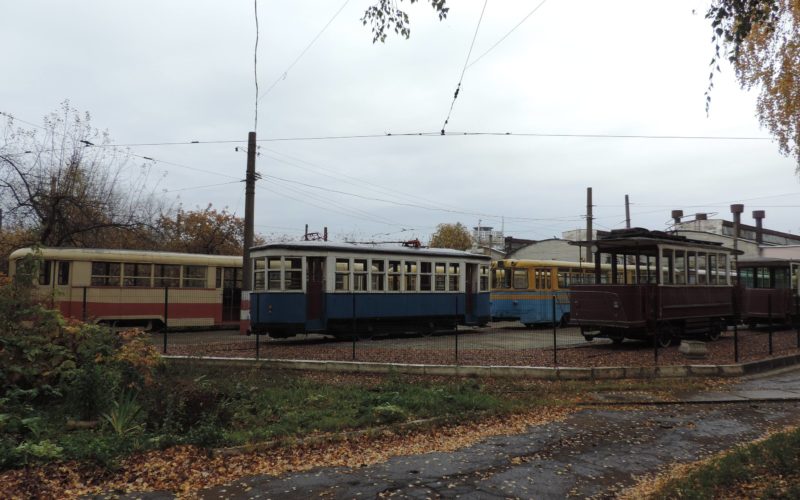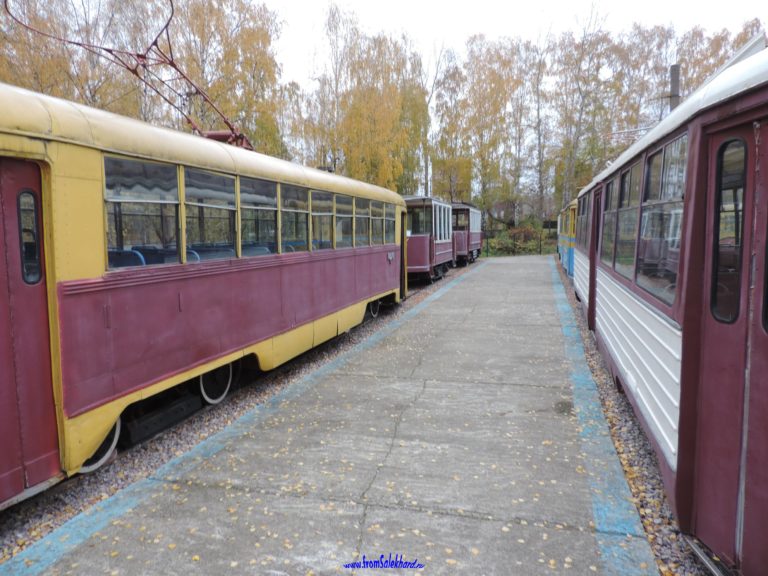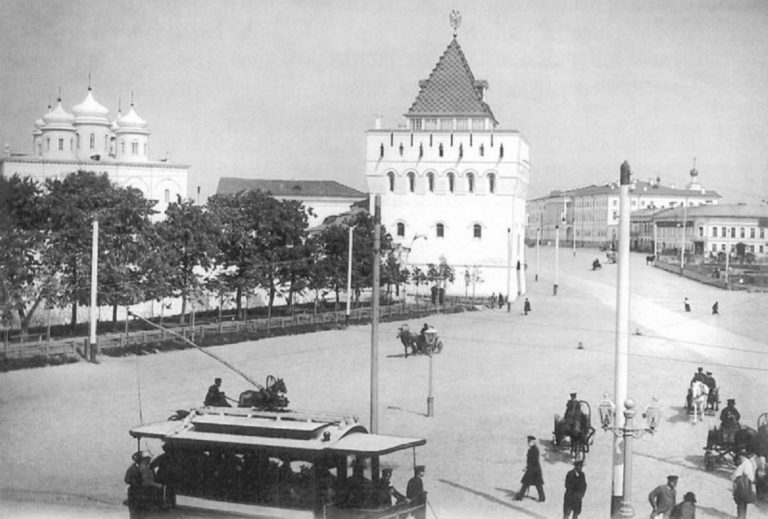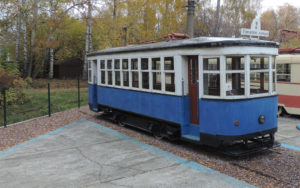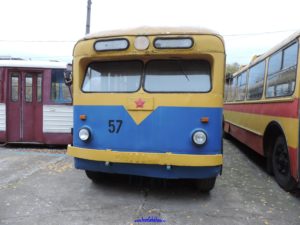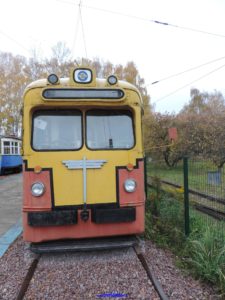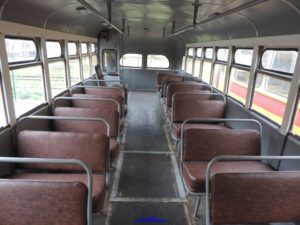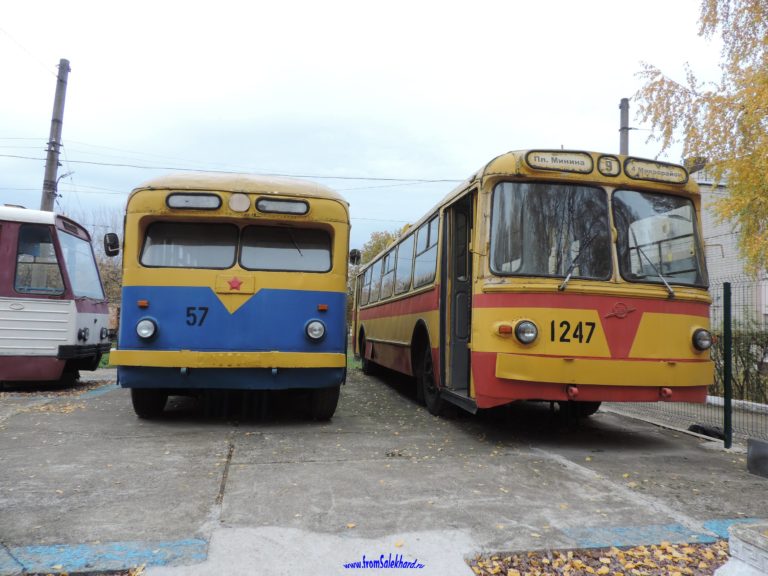Tram Museum (Nizhny Novgorod)
By fromSalekhard in My museums
On the territory of the tram depot No. 1 of Nizhny Novgorod there is a small Electric Transport Museum or, as it is also simply called, the Tram Museum. It was founded in 1971 in connection with the 75th anniversary of the Nizhny Novgorod tram.
There are a little more than a dozen exhibits, so you can get a little more detailed
It was in Nizhny Novgorod on May 20, 1896, for the first time in Russia, the second, after Kyiv, in the Russian Empire, the passenger traffic of Oerlikon trams of Belgian production was opened. It happened on the territory of the 16th All-Russian Trade, Industrial and Art Exhibition on the line built by the German company Siemens and Halske. The length of the track was about 4 km, the line was serviced by 20 wagons.
There are two Oerlikon trailers in the museum – motorized and trailed. And if everything is clear with the motor one – this is a replica built at the Sormovsky plant in 1987 for the filming of a movie based on Maxim Gorky’s novel “Mother”, then with the trailed one, not everything is clear: this is a replica or the original.
All this does not prevent us from appreciating the simplicity of the workplace of the carriage driver and passenger compartment, the net for catching passersby.
The next tram, already built in the Soviet Union, is a motor car of the X series, which was produced by the Ust-Katav and Mytishchi plants in 1926-1941.
The name “Series X” (Харьков) was given because the first batch of trams went to Kharkov.
Similar?
Cars of the LM series (Leningrad Motor) were produced at the Leningrad Car Repair Plant (VaRZ). Accordingly, the LM-49 was produced from 1949 to 1968. It had some progressive features: a load-bearing body, sliding doors.
By November 7, 1957, the first LM-57 tram was produced. In total, until 1969, just over a thousand were built.
In 1948, the production of trams began at the Riga Carriage Works. Its first model RVZ-6 was released in 1960. After several upgrades, the tram turned out to be so successful that despite the cessation of the production of spare parts in 1997, 12 passenger cars still run in Khabarovsk. In other cities, they were converted into special wagons (freight, towers, etc.) and continue to be used. Which is not surprising, because more than 6000 of them were released.
The design of the next model RVZ-7 began in 1974. The model was advanced: regenerative braking, fluorescent lighting and a bunch of others. So much so that it was possible to start serial production only two years later. In total, several dozen of them were produced, and at present only this single copy has been preserved.
Before the RVZ-6 tram, the MTV-82 tram, produced from 1947 to 1961, was the most popular. For the first two years they were produced in Tushino, making half a thousand copies, and then transferred to Riga, where they made another 1707 units.
It is also interesting because it had a close relative and namesake: the MTB-82 trolleybus, produced from 1946 to 1961.
Initially, it was produced at plant No. 82 of the People’s Commissariat of the Aviation Industry of the USSR, hence the index “82”. The plant was located in Tushino near Moscow, but for secrecy it was called Moscow. So the designation was born: Moscow trolleybus from plant No. 82: MTB-82. The total number of cars produced exceeded 5000 and it was the basis of the USSR trolleybus fleet in the 1950s.
But by the end of the decade, it was obsolete and was discontinued. At the same time, there was a large backlog of already assembled bodies. Of these, extending by two window sections, and collected the first copies of the tram of the same name.
However, it turned out that the resulting “wide-browed” trams did not fit into the overall dimensions everywhere, so we had to carefully choose routes for them. A narrower version began to be produced since 1948.
The similarities and differences between the salons can be seen with the naked eye.
The trolleybus, implemented on proven technical solutions, turned out to be simple and reliable in operation. But there were plenty of shortcomings as well. Therefore, to replace it, the ZiU-5 trolleybus was developed and since 1959 has been produced at the Uritsky Plant.
Until 1972, more than 16,000 machines were produced, some of which, with a regular service life of 14 years, worked in the 21st century.
Tags: Nizhny Novgorod, Railway
